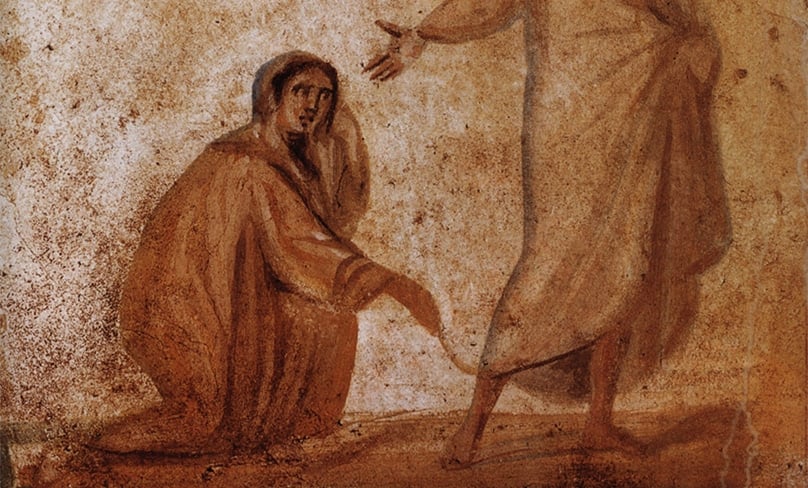
Photo: Wikimedia Comms/Public DOmain
By Anne-Marie Boudib
According to the Maronite Lectionary, the third Sunday in Lent offers us the reading of the haemorrhaging woman. It follows the trend of Sunday Gospel readings during Lent that focus on healing as a direct outcome of an encounter with Jesus.
Similar to the leper in last week’s Gospel, the haemorrhaging woman represents a marginal figure, restricted from going out in public, attending temple or public events.
She had suffered haemorrhages for twelve years. She is nameless and yet she has courage and audacity. She is the one who shows the greatest understanding of who Jesus really is and what it means to have faith.
Considered unclean, she’s ostracised from society. Yet she loses neither hope nor faith.
When she hears about Jesus she goes to find him and when she does, touches the tassel of his garment.
What happens next defies the expectations of all those around her. When Jesus notices that he has been touched, he does not chastise her. Instead, he lets her know that she is known to him. She is good. She is loved.
We are about to begin the third week in our Lenten journey and it is precisely this encounter with Jesus we seek. This, in fact, reminds us and convinces us of our identity as sons and daughters of a loving God who gave his whole self to us and is calling us to want more. How often have I pictured myself as the one reaching out to touch Jesus’ robes? How often have I asked myself, “How could I possibly respond to this overwhelming thirst Jesus has for me?” and, echoing Mother Teresa’s words, wondered, “How bewildering that God who is so big, needs something from me? That he wants my love, he thirsts for my love.”
In many ways we are like the haemorrhaging woman: as individuals, as a community and as a church. We bleed and suffer because of our sins, our selfishness, our division and our mistakes. We bleed because we do not always live up to our calling as true witnesses to the love of Christ, to his mercy and his compassion.
“As we conclude the second week in our Lenten journey, let’s dare to touch the tassel of Jesus’s robe, knowing that he is able to heal us with one simple touch of the hem of his garment.”
As a wife and mum of four children with a job, family commitments and financial responsibilities, juggling way more than I should, I have been asking myself repeatedly this week; by the time Good Friday comes around this year will I be able to contemplate Jesus crucified and say that I have made time and striven to quench his thirst with my whole-hearted love?
Will I be able to look at Jesus, who bleeds for the sake of the healing of my sickness and to save me from my sins?
This Lent we are called to look into Jesus’s face as the woman with the haemorrhage does.
Let us do so when we pray, when we come to adore him, when we deny ourselves, when we give of our time and our resources, when we read scripture, when we participate in Mass or the stations of the cross, when we choose not to complain or to love when we could have been resentful.
As we conclude the second week in our Lenten journey, let’s dare to touch the tassel of Jesus’s robe, knowing that he is able to heal us with one simple touch of the hem of his garment.
If we seek him with the faith of that woman, he offers us much more than just the hem of his garment. When we accept to be “touched” by his living word and his body and blood in the Eucharist we can be transformed. We can also be healed.
This Gospel passage is a call to know and to love Jesus more. It is a call to hope, despite the stressful or desperate times we may find ourselves in sometimes. So let us stretch out our hands with the faith of the haemorrhaging woman knowing we will feel warmth, know healing, and be restored.
Lord Jesus, help me to remain trustful, no matter the difficulty. Help me to see every situation and every person in the light of humility and truth. Help me to see goodness and to rejoice in it. Help me to always want—more than anything—to seek you out and to reach out to you in faith, the way the haemorrhaging woman did. Amen.
Anne-Marie Boudib is a Maronite Catholic mum of four living and working in Western Sydney.
